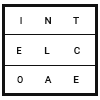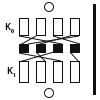INTV326 Introductory Methods of Intelligence Analysis
Course Description
INTV326 will provide students with an introduction to Intelligence Analysis and how intelligence professionals can incorporate tradecraft, including critical thinking and structured analytical techniques, to challenge judgements, identify mental mindsets, stimulate creativity, and manage uncertainty within the framework of providing sound assessments to decision-makers at the Strategic, Operational and Tactical level of war. Students will leverage scenario-based exercises to practice employing structured analytical techniques and other analytical methodologies in order to answer a decision maker’s critical information requirements.
Learning Outcomes
Upon completion of this course students will be able to:
- Analyze how the United States Government leverages the Intelligence Enterprise for decision-making at the tactical, operational, and strategic level of war.
- Understand the role of Commander’s Critical Information Requirements in driving analytical effort.
- Evaluate all source analysis and how intelligence disciplines can tip and cue to reduce strategic ambiguity.
- Analyze the Five Analytic Standards and Nine Analytic Tradecraft Standards and how they apply to Intelligence Analysis and Production.
- Examine how structured analytical techniques can be used to deal with nonquantifiable problems where the chances for surprise are significant, especially at the strategic level of war.
- Identify and criticize how the principles of structured analysis are employed to identify and eliminate cognitive biases and other shortfalls of intuitive judgement.
- Examine and apply models to analyze the broad spectrum of civil-military factors (ASCOPE, DIME actions and PMESII effects).
- Examine and assess how network analysis is used to map and analyze relationships among people, groups, organizations, computers, websites, and other related entities.
Course Objectives
During this course students will:
- Apply Intelligence Community analytic and tradecraft standards to think through notional or real-world problems.
- Analyze open source articles to apply the Eight Elements of Thought.
- Generate multiple hypotheses to demonstrate how analyzing multiple alternatives can mitigate analytical failings rooted in cognitive bias.
- Apply methodologies to analyze a tactical, operational and strategic problem.



 Cyberapolis
Cyberapolis Curriculum
Curriculum Career
Career Faculty
Faculty